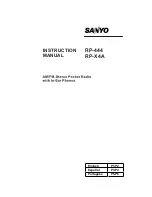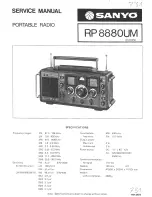
Developers Kit
Preliminary
20
*.RTC files contain all of the configuration information for OEM.EXE. *.RTC files can be
modified to change timeouts, ports, and commands. *.RTC files require very specific format as detailed
below:
* -- begins and ends each command sequence
T -- invoke transmit sequence over serial host/radio interface (API Mode 3)
R -- invoke receive sequence over serial host/radio interface (API Mode 3)
C -- invoke transmit sequence over serial host/radio interface (Transparent Modes 1,2,4)
S -- invoke receive sequence over serial host/radio interface (Transparent Modes 1,2,4)
D -- invoke delay
Note: Any line beginning with a "space" character is interpreted as a comment
Note: The first line in PING.RTC is always interpreted as a comment
Example Command Format
*T[transmit port number] [timeout]
[transmit port number] is either "1" or "2" as designated in PORTS.CFG
[timeout] is between "0000" and "9999" and is measured in milliseconds
[Command] [Length Low] [Length High] [Data] [Checksum automatically provided]
*
5.2.3
PORTS.CFG
Before attempting to run the executables, the user must ensure the development kit radios are
attached to the two ports specified in PORTS.CFG. The default configuration for PORTS.CFG assumes
that both developer kit radios are connected to the same computer.
The default baud rate in PORTS.CFG is 57600.
This should not be changed unless the
EEPROM has been corrupted
. In the event of corrupted EEPROM, hit “AltS” in the OEM.EXE program
to change the baud rate to 9600 and pin 26 on the interface connector, J1, of the radio must be logic low
level to communicate.
Note: If the EEPROM parameters for baud rate are changed, and the radio is reset, these utilities
will not communicate with the radio until pin 26 is held at logic low level and the third line of
PORTS.CFG is changed to 9600.
5.2.4
Setup Scripts
AeroComm provides several scripts to allow easy setup and configuration for different modes. These setup
scripts are as follows:
S1AC.RTC – Setup client radio to Mode 1 Addressed
S1AS.RTC – Setup server radio to Mode 1 Addressed
S1NC.RTC– Setup client radio to Mode 1 Non-Addressed
S1NS.RTC– Setup server radio to Mode 1 Non-Addressed
S2AC.RTC– Setup client radio to Mode 2 Addressed
S2AS.RTC– Setup server radio to Mode 2 Addressed
S2NC.RTC– Setup client radio to Mode 2 Non-Addressed
S2NS.RTC– Setup server radio to Mode 2 Non-Addressed
S4AC.RTC– Setup client radio to Mode 4 Addressed
S4AS.RTC– Setup server radio to Mode 4 Addressed
S4NC.RTC– Setup client radio to Mode 4 Non-Addressed
















































